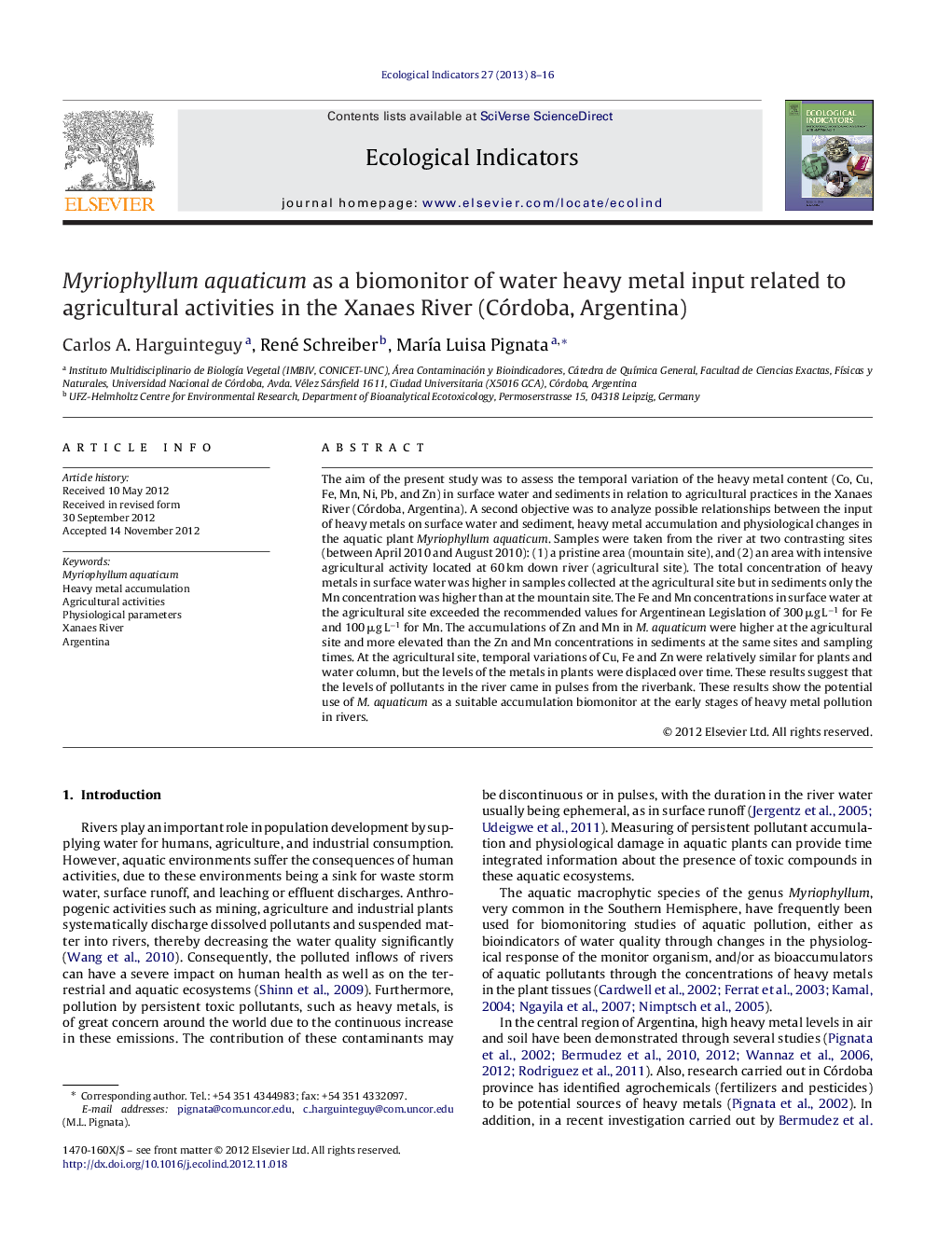| Article ID | Journal | Published Year | Pages | File Type |
|---|---|---|---|---|
| 4373514 | Ecological Indicators | 2013 | 9 Pages |
The aim of the present study was to assess the temporal variation of the heavy metal content (Co, Cu, Fe, Mn, Ni, Pb, and Zn) in surface water and sediments in relation to agricultural practices in the Xanaes River (Córdoba, Argentina). A second objective was to analyze possible relationships between the input of heavy metals on surface water and sediment, heavy metal accumulation and physiological changes in the aquatic plant Myriophyllum aquaticum. Samples were taken from the river at two contrasting sites (between April 2010 and August 2010): (1) a pristine area (mountain site), and (2) an area with intensive agricultural activity located at 60 km down river (agricultural site). The total concentration of heavy metals in surface water was higher in samples collected at the agricultural site but in sediments only the Mn concentration was higher than at the mountain site. The Fe and Mn concentrations in surface water at the agricultural site exceeded the recommended values for Argentinean Legislation of 300 μg L−1 for Fe and 100 μg L−1 for Mn. The accumulations of Zn and Mn in M. aquaticum were higher at the agricultural site and more elevated than the Zn and Mn concentrations in sediments at the same sites and sampling times. At the agricultural site, temporal variations of Cu, Fe and Zn were relatively similar for plants and water column, but the levels of the metals in plants were displaced over time. These results suggest that the levels of pollutants in the river came in pulses from the riverbank. These results show the potential use of M. aquaticum as a suitable accumulation biomonitor at the early stages of heavy metal pollution in rivers.
